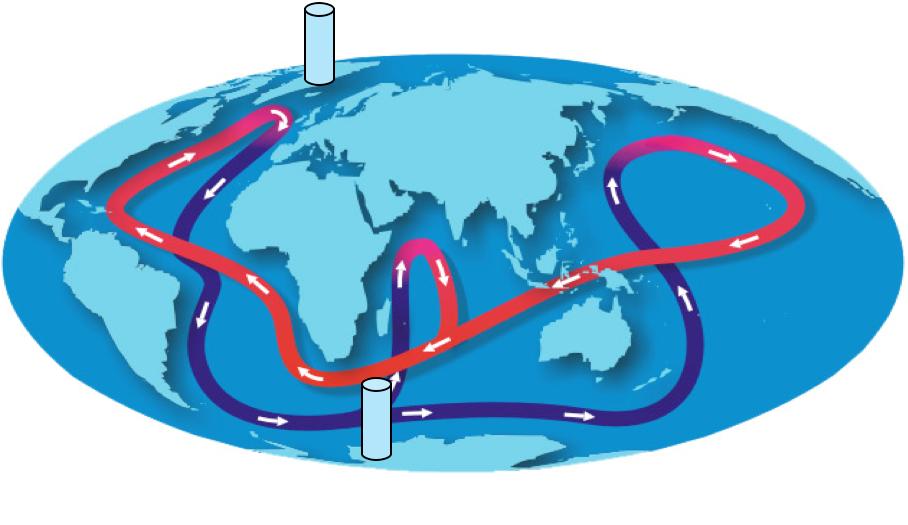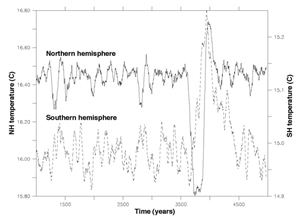Workshop on Earth Models of Intermediate Complexity

The most complex of climate models require too much computer time and experiments become impractical when we wish to study the evolution of Earth's climate on time scales of thousands to tens of thousands of years. Instead, another type of models, Earth Models of Intermediate Complexity (EMICs), is the state-of-the-art laboratory for investigations on such long time scales. The modeling group at the Centre for Ice and Climate use such models to understand the relationship between temperatures at high northern latitudes (as seen in Greenland ice cores) and high southern latitudes (as seen in Antarctic ice cores).
The Centre for Ice and Climate is hosting a mini-workshop to exchange experience with other groups working on related problems. Colleagues will be visiting from the Free University in Amsterdam, the Royal Dutch Meteorological Institute and the Bjerknes Centre for Climate Research in Bergen. The two-day event will include technical overviews of different models, presentation of research of a broader interest and ample time for discussions and planning of future collaboration.
The north-south relationship
With the existence of ice cores from both Greenland and Antarctica a relationship between northern and southern high latitude temperatures can be established. Typically, southern temperatures tend to cool when the north is warm and vice versa. The two hemispheres are tightly linked through the ocean circulation and an obvious explanation of the north-south relationship is variations in the ocean's overturning circulation. To test this hypothesis we need computer models of the climate which are able to represent the coupled ocean-atmosphere system.
The most complete models of the climate system are the so-called general circulation models (GCMs), in which the governing equations for mass, energy, moisture, radiation etc., are solved point by point over the globe timestep by timestep. This degree of detail comes at a price: GCMs are the most computationally expensive of the models, which means that it is not practically possible to make many millennia-long model runs. EMICs, on the other hand, are simplified versions of the GCMs which allow much faster computation while still providing the adequate physical treatment of oceanic and atmospheric processes for these relationships to be studied.
The EMIC type of model comes in a host of different combinations: Some are full GCMs with very coarse resolution, while some focus either on the atmosphere or on the ocean. Some even include models of the ice caps, vegetation or carbon cycle.

